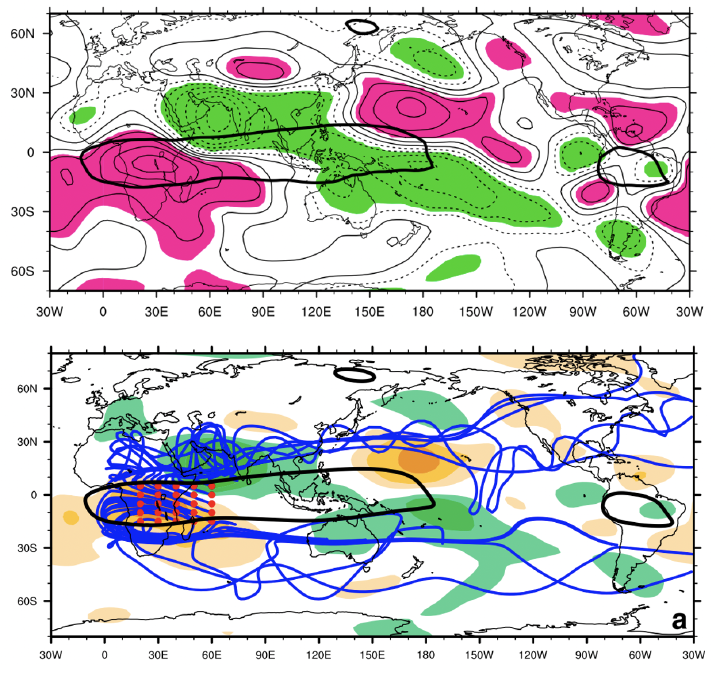Dynamics of an Interhemispheric Teleconnection across the Critical Latitude through a Southerly Duct during Boreal Winter

Abstract
In this study, an interhemispheric teleconnection pattern across the critical latitude from southern Africa through South Asia to the North Pacific was revealed in boreal winter monthly averaged 250-hPa streamfunction fields obtained from both the 40-yr ECMWF Re-Analysis (ERA-40) and the NCEP–NCAR reanalysis data from 1957/58 to 2001/02. Classical Rossby wave theory for zonally varying flow in which the effects of the basic-state meridional wind are ignored predicts that stationary Rossby waves cannot propagate across easterlies. To elucidate the underlying mechanisms responsible for this interhemispheric teleconnection, the theoretical basis for stationary wave propagation across the critical latitude is considered, taking into account meridional ambient flow. The theoretical results suggest that the southerly flow over East Africa, the western Indian Ocean, and South Asia creates a path for the northward propagation of stationary waves across the critical latitude. Stationary wavenumber and group velocity analysis, ray tracing, and simple model experiments applied to nearly realistic boreal winter mean flows confirm that disturbances excited in southern Africa and the western Indian Ocean can propagate across the critical latitude to South Asia through the southerly duct and then continue downstream along the North African–Asian subtropical jet.